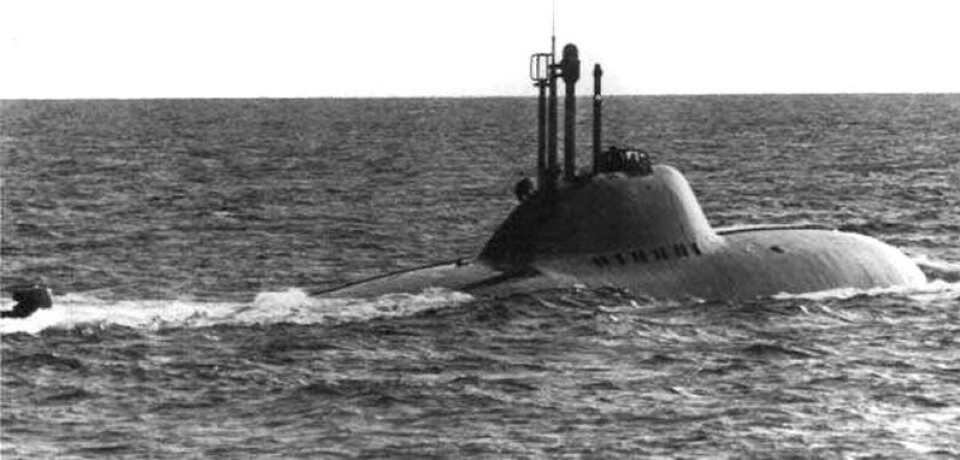
Hunter for Red October plans for comeback
Russia plans to blow the dust of the construction drawings of the Lira-class submarine, the fastest and deepest diving operational submarines ever built.
The Russian Navy is studying the opportunities for building nuclear ”robot submarines” – submarines with a much smaller crew than usual. The plan is to start production of the Lira-class (NATO reporting name Alfa) again, Lenta writes.
The Soviet project 705 Lira was a unique design with titanium hull and a lead cooled fast reactor as a power source. This reduced the size of the reactor compared to conventional designs, thus reducing the overall size of the submarine, and allowing for very high speeds. The submarine could reach 41 knots.
The crew was only 32, compared to 70 or more at vessels of similar classes. The 81 meters long submarine had a displacement of 3200 tons in submerged position.

In the Tom Clancy novel “The Hunt for Red October” and its film adaption, the fictional Alfa-class submarine “V.K. Konovalov” leads the pursuit of the improved Typhoon-class submarine Red October, captained by Marko Ramius.
Submarines of the Lira class had a few important drawbacks. The reactor design meant that the reactor had a short lifetime and had to be kept warm when it was note being used. As a result, the submarines were used as interceptors, mostly kept in port ready for a high-speed dash into the North Atlantic.
According to Sverodvinsk newspaper Korabelnaya Storona, the Lira submarines were “not very good” because of the complicated maintenance, which led to long breaks between campaigns. “Despite the absence of serious accidents, the reliability of some of the systems and equipment was allegedly insufficient (especially the main power plant, which used liquid-metal coolant), which also reduced its combat readiness.”
Naval experts believe that new technology allows for building the same kind of submarines that will be more reliable. “”It is not necessary to build a completely revolutionary vessel, as was done in project 705. It had both an innovative reactor with liquid metal coolant, highly automated equipment, and a number of other innovations, including a body of titanium alloys, and it was integrated into very compact volume,” a naval source said to Lenta. “A more rational way would be to create a robot submarine with a displacement that is normal for this class and based on tried and tested technical solutions with increasing automation. The crew of such a submarine can be reduced to 50-55 and later to 30-40 people.”
The Soviet Union built seven Lira-class vessels in the period 1971-1981. The first vessel was decommissioned in 1974 and all seven before the end of 1996. All vessels have been scrapped.















